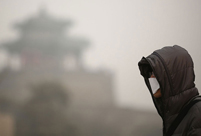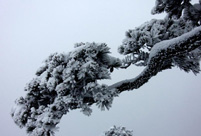WUHAN, Dec. 31 -- Archaeologists announced that more than 2,000 relics dating back more than 3,000 years and discovered in central China's Hubei Province are likely to reveal the mysteries of the Zeng State during the early Western Zhou Dynasty (1046-771 BC).
Two excavations at the Yejiashan Graveyard in Suizhou City, which began in June 2011 and March 2013 respectively, have led to the discovery of 140 tombs and 7 horse pits, where a large amount of pottery, bronzeware, lacquerware, protoporcelain and jade were unearthed, said Huang Fengchun, head of the excavation team, at a symposium on Monday.
The graveyard consists of a cluster of tombs believed to have belonged to three emperors of the Zeng State, an affiliated state of the Western Zhou Dynasty.
The excavation of the Yejiashan Graveyard is of great academic significance for the research of the enfeoffment system in the Western Zhou Dynasty, said Ye.
Further excavation will probably unravel the mysteries of the Zeng emperors, said Li Boqian, an archaeologist at Peking University.
First discovered in 2011, the Yejiashan Graveyard was named among China's Top 10 Archeological Findings that year by China Cultural Heritage News, a publication affiliated with the State Administration of Cultural Heritage.
The latest excavation has found the dynasty's first painted bronze and a tomb holding a set of 19 dings (cooking vessels) and 12 guis (food containers), which surpassed the burial norms for a king.
 Commemorate 120th birth anniversary of Mao Zedong
Commemorate 120th birth anniversary of Mao Zedong Female soldiers of PLA Marine Corps in training
Female soldiers of PLA Marine Corps in training Chinese cities to have a very grey Christmas as smog persists
Chinese cities to have a very grey Christmas as smog persists China and U.S. - the national image in each other’s eyes
China and U.S. - the national image in each other’s eyes The Liaoning's combat capability tested in sea trial
The Liaoning's combat capability tested in sea trial Chinese pole dancing team show their moves in snow
Chinese pole dancing team show their moves in snow Rime scenery in Mount Huangshan
Rime scenery in Mount Huangshan Ronnie O'Sullivan: My children mean the world to me
Ronnie O'Sullivan: My children mean the world to me Shopping in Hong Kong: a different picture
Shopping in Hong Kong: a different picture Yearender: Animals' life in 2013
Yearender: Animals' life in 2013 Hello 2014 - Chinese greet the New Year
Hello 2014 - Chinese greet the New Year Chocolate 'Terracotta Warriors' appear
Chocolate 'Terracotta Warriors' appear  Top 10 domestic news of 2013
Top 10 domestic news of 2013 Red crabs begin annual migrations in Australia
Red crabs begin annual migrations in Australia Artifacts retrieved from West Zhou Dynasty
Artifacts retrieved from West Zhou DynastyDay|Week|Month